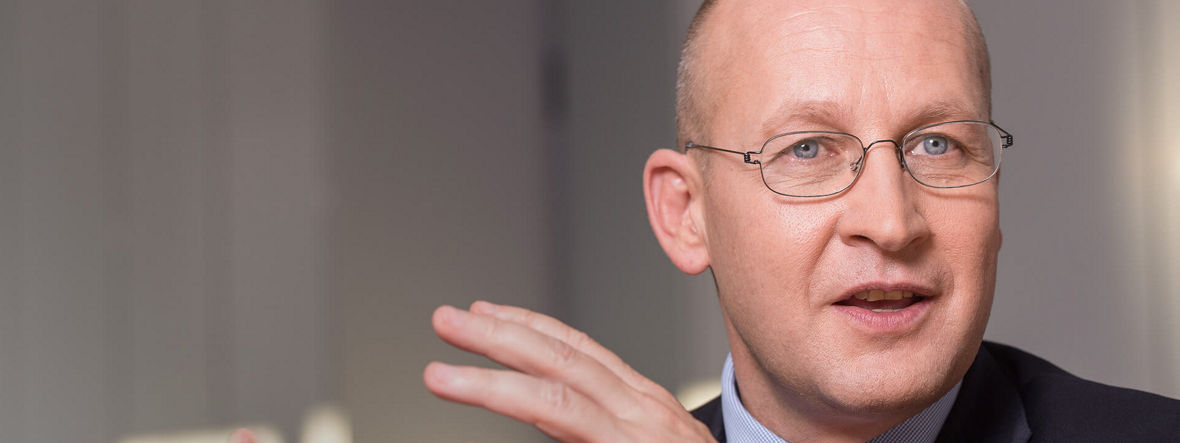In the minds of many people, Singapore is still an exotic place somewhere in Southeast Asia. Even for many travelers to Asia, this city-state at the southern tip of the Malay Peninsula is just a stopover on the way to their holiday destinations. The world of industry and finance, however, has a very different view. It has selected the city as an important Asian hub—a choice reflected in the rankings of the cost of living, in which Singapore regularly appears as one of the most expensive cities in the world. A top spot, but perhaps a somewhat less attractive one.
Yet people often overlook a much more important ranking: For years now, Singapore has been one of the most competitive countries on earth. Only recently, the renowned business school IMD put Singapore in third place on its World Competitive Index—behind the USA and Hong Kong, but far ahead of Germany (15) and other major economies such as the UK (20) and France (28).
How can it be that a small island without any natural resources to speak of has become one of the most powerful economies in the world? The answer sounds simple: through long-term planning, big ideas, and rapid action. Especially in the area of innovation, Singapore is setting benchmarks that should be receiving more recognition in Germany. That’s because many aspects of Singapore are exemplary.
ECONOMIC OPENNESS IS A KEY TO SUCCESS
Ever since Singapore declared its independence in 1965, its government has strategically developed this country and transformed it from an emerging economy into one of the world’s most modern nations. Openness to the outside world was part of the program from the very start. Major firms from all over the world were wooed with attractive business conditions. Sales offices were the first to respond, but they were followed by production facilities. Thanks to Singapore’s high level of legal certainty, excellent state-financed infrastructure, and exemplary protection of intellectual property, the number of companies flocking to it increased rapidly. That also applies to Evonik. Our production plants for oil additives and amino acids will be followed this year by our research center, which will focus on future-oriented technologies such as additive manufacturing and the artificial production of human tissue cells.
This qualitative upswing was made possible primarily by Singapore’s outstanding and systematic promotion of science. This tiny country, which has only six million inhabitants, can afford three national universities, as well as private colleges and various affiliates of international universities.
HUGE INVESTMENTS IN FUTURE-ORIENTED SECTORS
Ever since Singapore declared its independence in 1965, its government has strategically developed this country and transformed it from an emerging economy into one of the world’s most modern nations. Openness to the outside world was part of the program from the very start. Major firms from all over the world were wooed with attractive business conditions. Sales offices were the first to respond, but they were followed by production facilities. Thanks to Singapore’s high level of legal certainty, excellent state-financed infrastructure, and exemplary protection of intellectual property, the number of companies flocking to it increased rapidly. That also applies to Evonik. Our production plants for oil additives and amino acids will be followed this year by our research center, which will focus on future-oriented technologies such as additive manufacturing and the artificial production of human tissue cells.
This qualitative upswing was made possible primarily by Singapore’s outstanding and systematic promotion of science. This tiny country, which has only six million inhabitants, can afford three national universities, as well as private colleges and various affiliates of international universities.
All of these institutions are part of a state planning system that sets itself clear goals based on science. A state-financed think tank called the Center for Strategic Futures sends its strategies and recommendations for action directly to the Prime Minister. Once a key sector has been defined, the state acts—and how! For example, the city-state has invested € 5 billion to create the research and development center Biopolis in order to climb into the top ranks in the field of biomedicine. Singapore’s Economic Development Board offers quick and attractive solutions for investors and companies. And an open innovation ecosystem authorizes and promotes a wide variety of cooperative projects in order to promote innovations.
Another example is Singapore’s decision to become a stronghold for startups. A fund of € 20 billion has been earmarked to finance the plan. The financial risks of founding a new company will be largely borne by the state. By comparison, the German government invested approximately € 17 billion in research and development in 2017—although the German economy is more than 11 times as large as that of Singapore.
Of course one shouldn’t ignore the downside of this rapid development. Behind all the strong guidance by the state stands a strong will to maintain control. Singapore’s media are still subject to strict censorship, and its notorious criminal code is based on a desire for absolute discipline. It’s also possible to activate waves of innovation like Singapore’s in a more liberal social system. But in order to make that possible, we need to conduct some uncomfortable debates to their logical conclusions and then to implement the corresponding policies.


